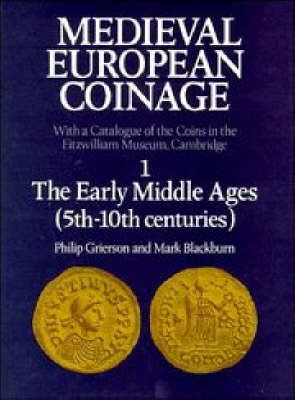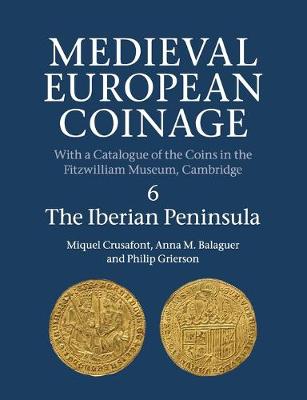Medieval European Coinage
3 total works
Volume 1, The Early Middle Ages (5th-10th Centuries)
by Philip Grierson and Mark Blackburn
Published 27 November 1986
This, the first volume of Medieval European Coinage, surveys the coinage of Western Europe from the fall of the Roman Empire in the West in the fifth century to the emergence of recognizable 'national' political units in the tenth. It starts with the Vandals, Visigoths, Burgundians and other Germanic invaders of the Empire, whose coins were modelled on contemporary issues of the Western or Eastern emperors. The coinage of the Franks is followed from early Merovingian times through to the establishment and subsequent fragmentation of the Carolingian empire. Italy is represented by the coinages of the Ostrogoths, Lombards, Carolingians and popes down to the Ottoman conquest in the mid-tenth century. The coinage of the Anglo-Saxons is traced from the introduction of minting in the early seventh century to the emergence of a united kingdom during the first half of the tenth century, including the aberrant coinages of Northumbria and the Anglo-Viking coinages of the Danelaw.
Volume 6, The Iberian Peninsula
by Miquel Crusafont, Anna M. Balaguer, and Philip Grierson
Published 30 May 2013
This volume of Medieval European Coinage is the first English-language survey to bring the latest research on the coinage of Spain and Portugal c.1000-1500 to an international audience. A major work of reference by leading numismatic experts, the volume provides an authoritative and up-to-date account of the coinages of Aragon, Catalonia, Castile, Leon, Navarre and Portugal, which have rarely been studied together. It considers how money circulated throughout the peninsula, offering new syntheses of the monetary history of the individual kingdoms and includes an extensive catalogue of the Aragonese, Castilian, Catalan, Leonese, Navarrese and Portuguese coins in the collection of the Fitzwilliam Museum. This major contribution to the field will be a valuable point of reference for the study of medieval history, numismatics and archaeology.
Volume 7, The Low Countries, Part 1, The Early Coinage and the Pre-Burgundian South
by Philip Grierson, Peter Spufford, Mark Blackburn, and Serge Boffa
Published 1 October 2017


